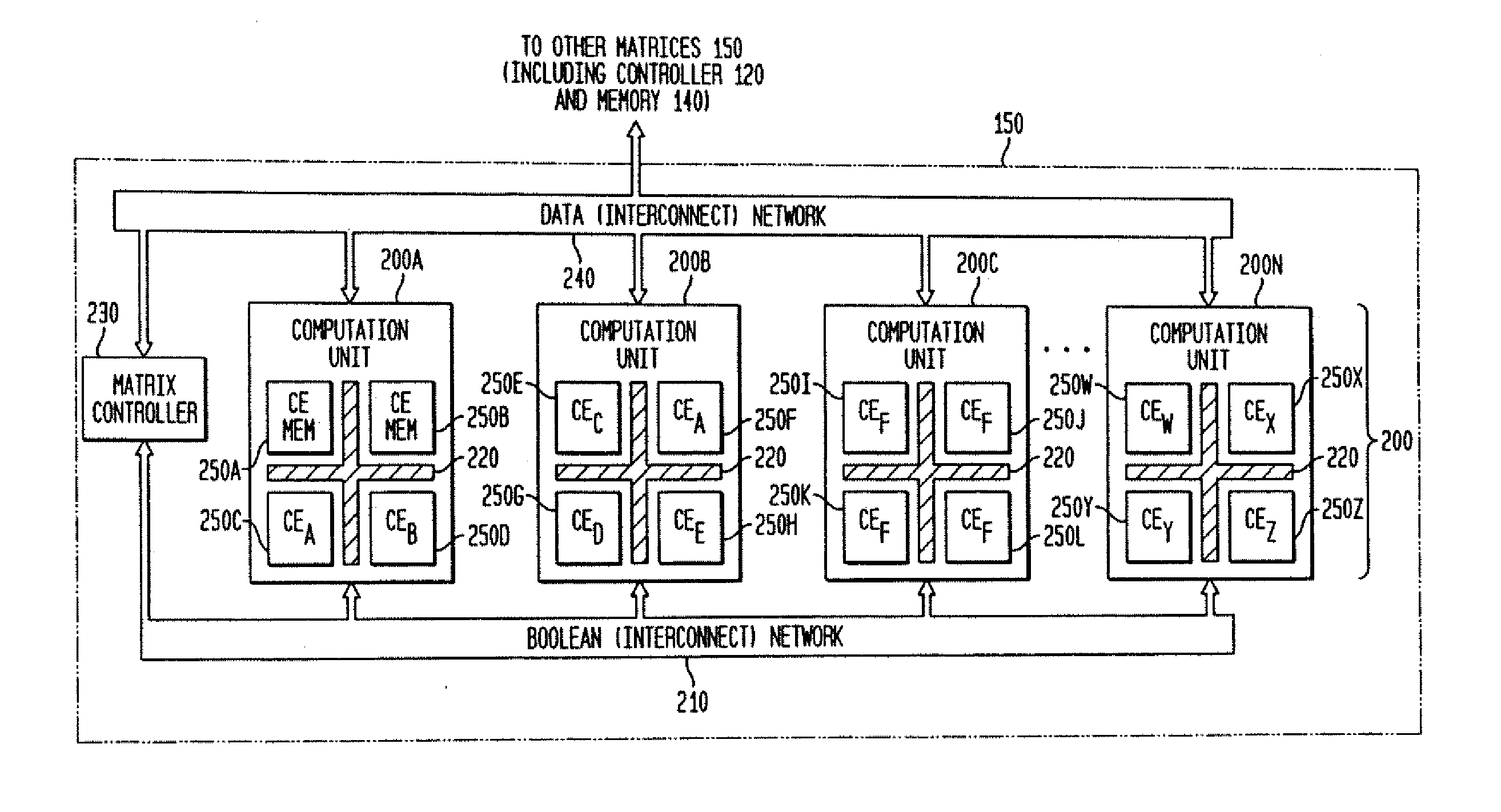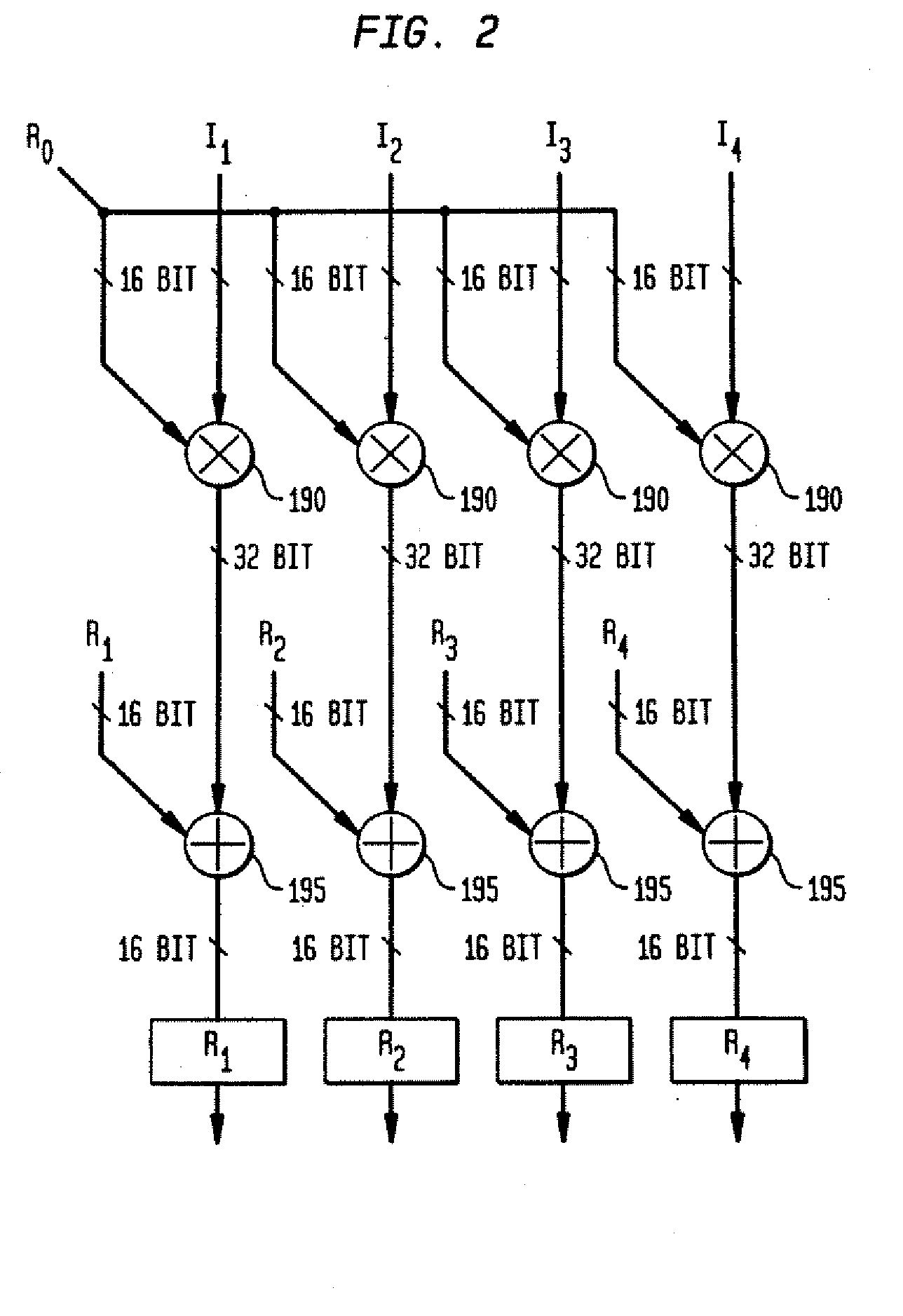Method and system for managing hardware resources to implement system functions using an adaptive computing architecture
a technology of adaptive computing and hardware resources, applied in the field of integrated circuits, can solve the problems of consuming significantly more power, reducing the efficiency and comparatively inefficient performance of actual algorithmic operations of processors, so as to achieve efficient and efficient combining and maximizing the various advantages of processors , the effect of minimizing potential disadvantages
- Summary
- Abstract
- Description
- Claims
- Application Information
AI Technical Summary
Benefits of technology
Problems solved by technology
Method used
Image
Examples
Embodiment Construction
[0028]As indicated above, it would be desirable to have a new form or type of integrated circuitry which effectively and efficiently combines and maximizes the various advantages of processors, ASICs and FPGAs, while minimizing potential disadvantages. In accordance with the present invention, such a new form or type of integrated circuit, referred to as an adaptive computing engine (ACE), is disclosed which provides the programming flexibility of a processor, the post-fabrication flexibility of FPGAs, and the high speed and high utilization factors of an ASIC. The ACE integrated circuitry of the present invention is readily reconfigurable, in real-time, is capable of having corresponding, multiple modes of operation, and further minimizes power consumption while increasing performance, with particular suitability for low power applications.
[0029]FIG. 1 is a block diagram illustrating an exemplary apparatus 100 embodiment in accordance with the present invention. The apparatus 100, ...
PUM
 Login to View More
Login to View More Abstract
Description
Claims
Application Information
 Login to View More
Login to View More - R&D
- Intellectual Property
- Life Sciences
- Materials
- Tech Scout
- Unparalleled Data Quality
- Higher Quality Content
- 60% Fewer Hallucinations
Browse by: Latest US Patents, China's latest patents, Technical Efficacy Thesaurus, Application Domain, Technology Topic, Popular Technical Reports.
© 2025 PatSnap. All rights reserved.Legal|Privacy policy|Modern Slavery Act Transparency Statement|Sitemap|About US| Contact US: help@patsnap.com



